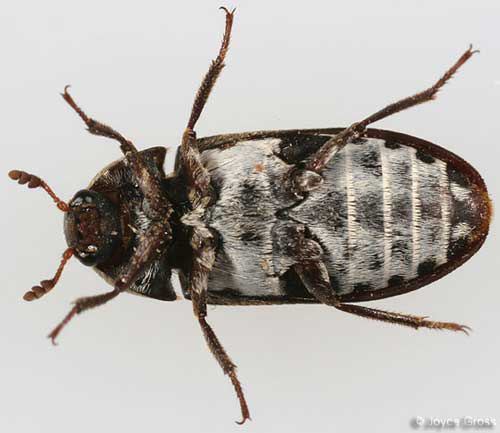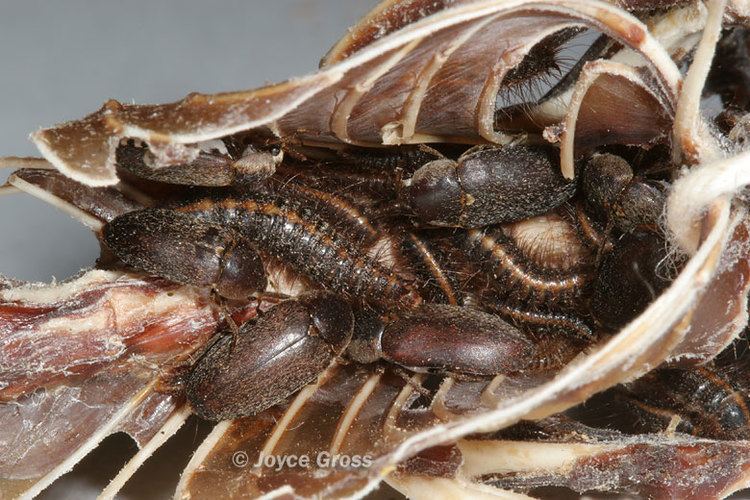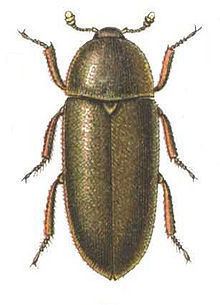Order Coleoptera Higher classification Dermestes | Scientific name Dermestes maculatus Rank Species | |
 | ||
Subgenus Dermestes (Dermestinus) Similar Dermestes, Beetle, Dermestidae, Insect, Dermestes lardarius | ||
Dermestes maculatus
Dermestes maculatus is a species of beetle with a worldwide distribution, being present on all continents except Antarctica. In Europe, it is present in all countries.
Contents
- Dermestes maculatus
- Escarabajos del cuero dermestes maculatus
- Description
- Pests
- Larvae
- Use in skeleton preparation
- References

Escarabajos del cuero dermestes maculatus
Description

The beetle is black or dull and usually hairy. The species is often found underneath dead animals that have decomposed for several days to weeks. Their eating habits can cause a dead animal to become just a skeleton. The appearance of the beetle on decomposing remains of humans and other animals can be used to estimate postmortem interval in cases of suicide, homicide, or unattended death. The adults generally arrive within 5 to 11 days following an animal's death. The larvae develop for five to seven weeks, and the adult beetles live for four to six months.
Pests

The beetle feeds on carrion and dry animal products. They are pests of the silk industry in Italy and India. Dried fish, cheese, bacon, dog treats, and poultry are some of the foods that the beetle gets into. The beetle has been known to attack and eat live turkeys.
Larvae

The bodies of the larvae are covered in setae. The bottom of the abdomen is yellowish-brown while the dorsal surface is dark brown, usually with a yellow line in the middle. There are two urogomphi that are on the upper surface of the last segment and curve upward and away from the tip of the abdomen. The pupa is shaped like an oval, is usually smaller than the larvae, and do not have setae. The first documented case of papular urticaria was caused by the larvae. No preference was found for the larvae out of calf meat, chicken meat, and pellet feed for rodents. The pupae may be cannibalized by the larvae.
Use in skeleton preparation
Dermestes maculatus is the species of carrion beetle typically used by universities and museums to remove the flesh from bones in skeleton preparation. Human and animal skeletons are prepared using this method and the practice has been in use for over 150 years.
